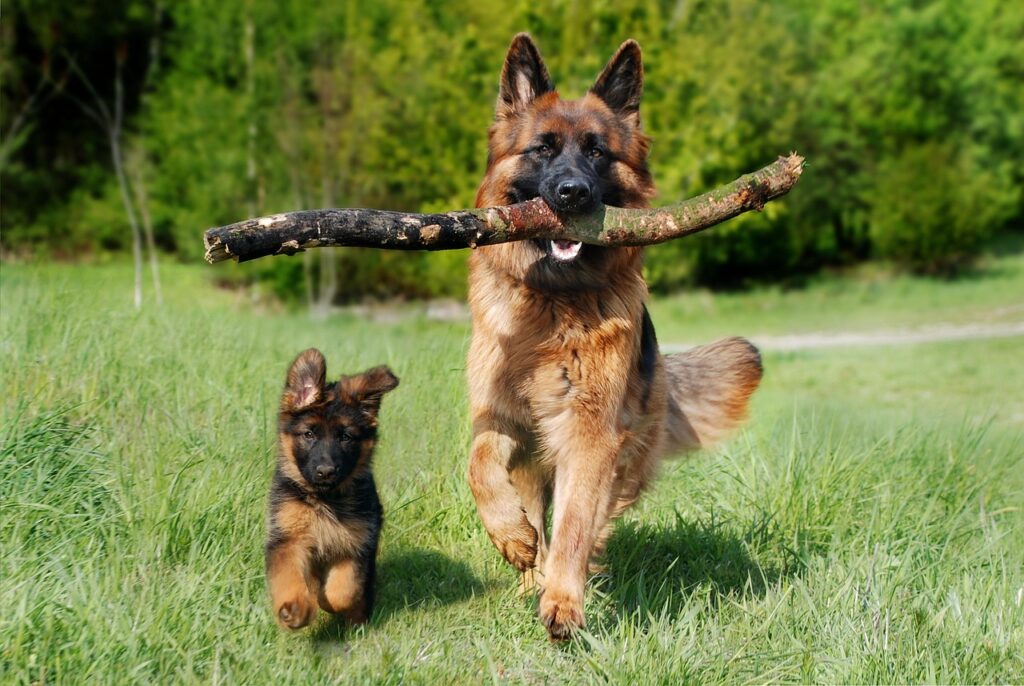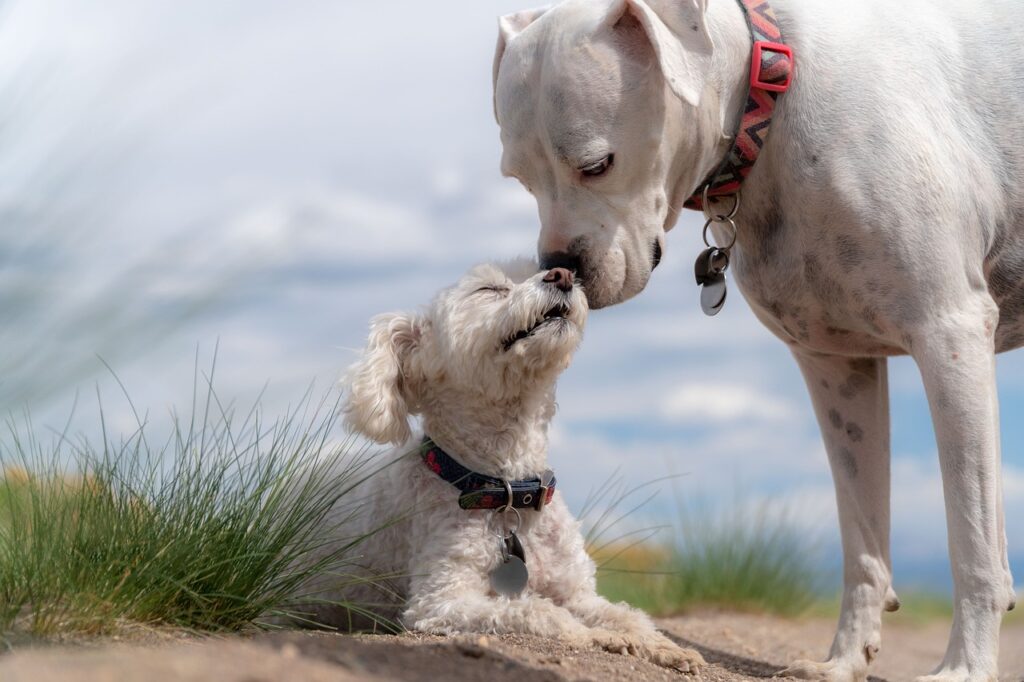| Summary: Male dogs are typically larger, more energetic, and territorial, with a stronger drive for dominance. They tend to be more affectionate but can require more training. Female dogs are smaller, calmer, and more independent, often easier to train and socialize. Both genders have unique behavioral and health traits to consider. |
When considering adopting a dog, one of the primary decisions you’ll face is whether to choose a male or a female. This choice can affect everything from size and temperament to health and behavior. Learn more about the unique double-layered coat of an Anatolian Shepherd and how to care for it effectively.
I will explore the key differences between male dog vs female dog characteristics, providing a comprehensive overview of their unique characteristics. From physical traits to health concerns, we will delve into the aspects that make male and female dogs distinct, helping you make a well-informed choice for your lifestyle and household.

Blog Highlights
TogglePersonal Opinion
Both male dog vs female dog characteristics can make great pets, and your choice should ultimately depend on your preferences and the environment in which you live. Male dogs tend to be more energetic and larger, while female dogs are typically calmer and more independent. Understanding these differences will allow you to select a dog that fits your personality and home life.
For insights on whether Pomeranians should wear a collar, including considerations for safety and alternatives, check out this informative article.
Key Features of Male Dogs
Male dogs have distinct physical traits, behavioral tendencies, and health considerations. Understanding their unique characteristics—such as size, energy, territorial instincts, and affection—can help you decide if a male dog fits your lifestyle.
1. Physical Size and Build
Male dogs generally tend to be larger than female dogs. While this can vary by breed, it’s common for male dogs to outweigh females by an average of 10-20%. Male dogs often have a more muscular build, contributing to their larger size. Here’s a breakdown of some general sizes of different dog breeds for males vs. females:
| Breed | Male Weight (kg) | Female Weight (kg) | Height (inches) |
| Golden Retriever | 29-34 | 25-32 | 23-24 |
| German Shepherd | 30-40 | 22-32 | 24-26 |
| Labrador Retriever | 29-36 | 25-32 | 22-24 |
| Beagle | 9-14 | 8-13 | 13-15 |
| Boxer | 30-36 | 25-32 | 22-25 |
On average, male dogs tend to be about 10% larger in terms of weight and height. This difference is most notable in large breeds like German Shepherds or Golden Retrievers.
2. Higher Energy Levels
Male dogs, particularly those that are unneutered, often have higher energy levels than females. They tend to be more active and playful, seeking out stimulation and playtime. This can be great for active families who can keep up with their dog’s high energy, but it can also lead to behavioral issues if not properly exercised.
Males may also be more prone to impulsiveness, especially during their younger years. For a comprehensive guide on what kind of harness is best for a Pomeranian, including comfort and safety tips, check out this article.
3. Territorial Behavior
One of the most notable characteristics of male dogs is their territorial nature. Male dogs often mark their territory, especially if they have not been neutered. This behavior is tied to their instinct to establish dominance. The marking of territory, whether through urination or other behaviors, can become more frequent in unneutered males. Neutering can often reduce or eliminate this tendency, making them easier to manage in shared spaces.
4. Affection and Loyalty
Male dogs are generally very affectionate and loyal to their owners. They often form strong bonds and can become clingy at times, especially in a one-on-one relationship with their owner. Their loyalty makes them excellent companions, and they can become very attached to their human families. However, their need for attention and affection can sometimes lead to separation anxiety if not properly trained.

Key Features of Female Dogs
Female dogs bring their own set of traits, from their smaller size and calmer demeanor to nurturing instincts and independence. Exploring these features will guide you in choosing the right companion for your home.
1. Physical Traits
Female dogs tend to have a more refined and graceful appearance compared to males. They are typically smaller in size, with a narrower build. Female dogs may also have smaller heads and more slender bodies. For example, in breeds like the Beagle, the difference in size between males and females can be quite pronounced. However, this size difference becomes less noticeable in smaller breeds or toy dogs.
2. Calmer and More Independent
Female dogs are often more independent and calmer than males. They tend to be less excitable, making them easier to handle, especially in households with young children or older adults.
Their calmer demeanor also makes them less prone to destructive behaviors, such as chewing, digging, or excessive barking. For owners who prefer a quieter and more self-sufficient pet, female dogs may be a better choice. Discover if the American Eskimo is a guard dog and learn about its suitability for protecting your home.
3. Nurturing Instincts
Female dogs often exhibit strong nurturing behaviors, especially when they are around puppies or other animals. This makes them great companions for families, as they tend to be more patient and gentle. Even if they aren’t mothers themselves, females often have a natural desire to care for younger pets, which can make them ideal in multi-pet households.
4. Less Territorial Behavior
Female dogs, as a general rule, are less territorial than males. They are less likely to mark their territory or exhibit dominant behaviors over other dogs or pets. This can make them easier to manage in a household with other animals. Spayed females are typically less prone to mood swings related to hormonal changes, although they may still display signs of dominance or territorial behavior depending on the breed.

In-Depth Comparison of Male Dog Vs Female Dog Characteristics
Male dog vs female dog characteristics differ in behavior, health, and size. Understanding these contrasts in traits like territoriality, energy, and trainability can help you make an informed decision about your ideal pet.
1. Behavior and Temperament
Behavioral differences between male and female dogs are often significant. Males tend to be more energetic, dominant, and sometimes challenging to train, particularly in a busy or competitive environment. They may engage in more rough play and be less tolerant of other dogs. Learn about the size collar for an American Eskimo to ensure a perfect fit and comfort for your dog.
Females, on the other hand, are usually more temperate and less excitable. They tend to have a more balanced temperament, making them easier to train and manage. Here’s a comparison of their typical behaviors:
| Behavioral Trait | Male Dogs | Female Dogs |
| Energy Levels | Higher, need more exercise | Moderate, easier to manage |
| Dominance | More dominant, territorial | Less dominant, more reserved |
| Affection | Clingy and affectionate | Nurturing, often independent |
| Socialization | More excitable with other dogs | Typically calmer around other pets |
| Training | Can be more stubborn, playful | Easier to train, calmer |
2. Health Considerations
There are several health issues that differ between male and female dogs, particularly those related to their reproductive systems.
- Male Dogs: Male dogs can experience prostate issues and testicular cancer, though neutering typically mitigates these risks. Neutering male dogs at an early age can significantly reduce the chances of prostate problems and can prevent testicular cancer.
- Female Dogs: Female dogs are at risk for uterine infections, ovarian cysts, and breast cancer if not spayed. Spaying female dogs eliminates the risk of uterine cancer and drastically reduces the chances of breast cancer. Female dogs also go through heat cycles, which can cause mood swings, irritation, and attract male dogs, leading to unwanted behaviors like roaming.
3. Size Differences and Lifespan
On average, male dogs tend to be larger, but they also have shorter lifespans compared to females. Male dogs live, on average, 10-13 years, while females typically live 12-15 years. This difference is partly due to the larger size of male dogs, which generally leads to more health complications as they age.
4. Training and Socialization Differences
Training and socialization are key components of a dog’s development, and male and female dogs often display differences in how they approach these areas.
Male Dogs
Male dogs, particularly those who are not neutered, can be more difficult to train due to their strong instincts and higher energy levels. This can lead to greater distractions when they are out in public or around other dogs.
Males may also exhibit dominant behaviors that can make them less responsive to training. In some cases, they may challenge authority or try to assert themselves in the pack. However, their natural drive to please can make them trainable with consistent reinforcement.
Another consideration is that male dogs, especially when they reach maturity, may be more interested in exploring the environment, which can make socialization harder if not carefully managed. Discover why Afghan Hound collars are wide by exploring the unique characteristics of this breed and how wide collars enhance their comfort and style.
Male dogs may be more prone to distractions when meeting new people or other animals, and they might act possessive or aggressive towards other males.
Female Dogs
Female dogs tend to be easier to train, as they often have a calmer and more focused disposition. Their ability to concentrate during training sessions allows them to pick up commands more quickly. In general, female dogs are less dominant, and this can make them more cooperative in following instructions.
Female dogs also tend to have a more balanced approach to socialization. While they can still be protective of their family, they are often less aggressive toward other animals compared to males. Females typically don’t have the same territorial tendencies, which can make them more open to meeting new people and pets.
5. Grooming Needs and Considerations
Grooming is a crucial part of dog care, and while many factors—such as breed and coat type—play a role, there are some gender-specific grooming considerations as well.
Male Dogs
Male dogs generally do not require extra grooming beyond what their breed and coat type dictate. However, if a male dog is not neutered, there might be some additional grooming needs to account for.
Unneutered males often have stronger odors, which can sometimes make regular grooming essential to maintain their cleanliness and comfort. Additionally, male dogs may exhibit more frequent marking behavior, leading to potential urine stains on their coats that need to be cleaned more often.
While males are not typically known for shedding more than females, some breeds of male dogs may shed more during certain seasons, especially in breeds with double coats. Regular brushing and bathing help keep shedding under control.
Female Dogs
Female dogs generally require similar grooming as male dogs, but there are some additional factors to consider, especially if the dog is in heat. During this time, a female dog may experience increased vaginal discharge, which could require more frequent cleaning to avoid irritation and maintain hygiene. This discharge can sometimes leave stains on their fur, making regular washing necessary.
If the female dog is not spayed, she may experience hormonal fluctuations that can affect her coat condition. For example, unspayed females might experience coat changes during their heat cycle, leading to shedding or dull fur. Keeping up with grooming during these periods is important to ensure the coat remains in good condition.
When to Choose a Male Dog
Male dogs are ideal for active individuals or families who can match their energy levels. If you’re looking for a larger dog who is affectionate and protective, a male dog may be the better choice. However, be prepared for the need for more exercise and training to manage their sometimes stubborn or territorial behaviors.

When to Choose a Female Dog
Female dogs are best suited for individuals or families who value calmness and independence. If you’re looking for a dog with strong nurturing instincts who may be easier to train and manage, a female dog could be the ideal choice. Female dogs also tend to live longer, making them a better option for those who want a long-term companion.

Wrapping Up
Choosing between male dog vs female dog characteristics is a personal decision that depends on your preferences, living situation, and lifestyle. While male dogs are often more energetic, larger, and affectionate, female dogs tend to be calmer, more independent, and less territorial. Both genders have unique advantages and characteristics that make them special companions.
Ultimately, the best dog for you is the one that fits your environment, lifestyle, and what you’re looking for in a pet. Whether you choose a male or female dog, both can bring joy, companionship, and love to your home. Find out what style dog collar is best for hounds to ensure comfort and safety for your furry friend.





